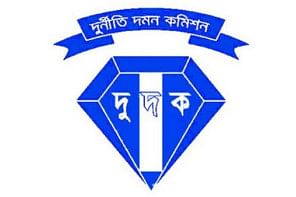Sunil Gangopadhyay's 81st birth anniversary

Equally adept at prose and poetry, Sunil Gangopadhyay authored countless unforgettable poems, novels, short stories, travelogues, and plays in Bangla. He also brought his considerable talents to reviews, and comments as well as literature for children. In his novels, Gangopadhyay created characters –romantic, serious, eccentric, comic, and loveable – to which readers readily related, while some characters became larger than life. He explored the ups and downs of urban middle-class life of Kolkata with a keen eye.
If he had been alive, the Indian wordsmith would have been 81 today.
“One of the most significant chapters of my life was spent in this country, in the district of Faridpur. That's one of the prime reasons behind my tremendous fascination for the country,” Gangopadhyay had told The Daily Star in an interview. “I feel that I have a strong readership in this country because the contents of my novels have great similarities with the country's socio-economic, cultural and political aspects.”
Gangopadhyay's writings are simple, easily understandable yet poignant, and one can easily read most of them cover to cover in one sitting. He was the founder editor of “Krittibaas”, a seminal poetry magazine that became a platform for a new generation of poets experimenting with many new forms in poetic themes, rhythms, and articulations. His poetry is urbane, romantic, vibrant and cheeky and lends itself simply to Bohemian myth-making, which appears to have been cultivated consciously by the Krittibaas group.
Gangopadhyay is recognised for his outstanding style and alluring language. Above all, he was a poet. His series of poems titled “Nikhilesh” and “Neera” are tremendously popular among readers of all ages. He created an individual language for his essays and novels. He was a popular writer but his writings could reach the territory of the intellectual readers' circle in both Bangladesh and India. Many of his novels' protagonists appeal to the middle class of our society. He splendidly elucidates their hopes, joys, sorrows, family feuds, wants, romances and more. The stories reflect the writer's engaging prose and ability to conjure fascinating stories out of most ordinary daily events. He portrays history, politics and contemporary issues in many of his poems and novels. Many of his novels are based on the history of the subcontinent.
His “Ordhek Jibon” is an autobiographical work, depicting his early life in Faridpur, Kolkata. It highlights his bohemian lifestyle and how he moved on to writing prose, his poetic struggles, depression and successes. His family moved to Kolkata before the Partition — a city that saw the blossoming of his talents shaped by a zeal for reading, and endless adda with literary and other geniuses.
However, it was Gangopadhyay's father, a teacher, who played a significant role in bringing his poetic talent to the fore. In “Ordhek Jibon”, Gangopadhyay mentioned how his father kept him engaged in translating Alfred Lord Tennyson's poems after his school final examinations. After translating some of those poems, he considered trying his hand at writing poems of his own and sent some of them to literary magazines which eagerly published them.
Gangopadhyay's remarkable novel “Shei Shomoy” provides insights into history and its mysterious intricacies. It could easily be proclaimed as one of the best novels ever written in the historical fiction genre in Bangla. Among his other notable works are “Prothom Alo” and “Purbo-Paschim”, a novel on the Partition and its effects seen through the eyes of generations of Bengalis in West Bengal and Bangladesh.
The wordsmith succumbed to a heart attack on October 23, 2012 at the age of 78.

 For all latest news, follow The Daily Star's Google News channel.
For all latest news, follow The Daily Star's Google News channel. 



Comments